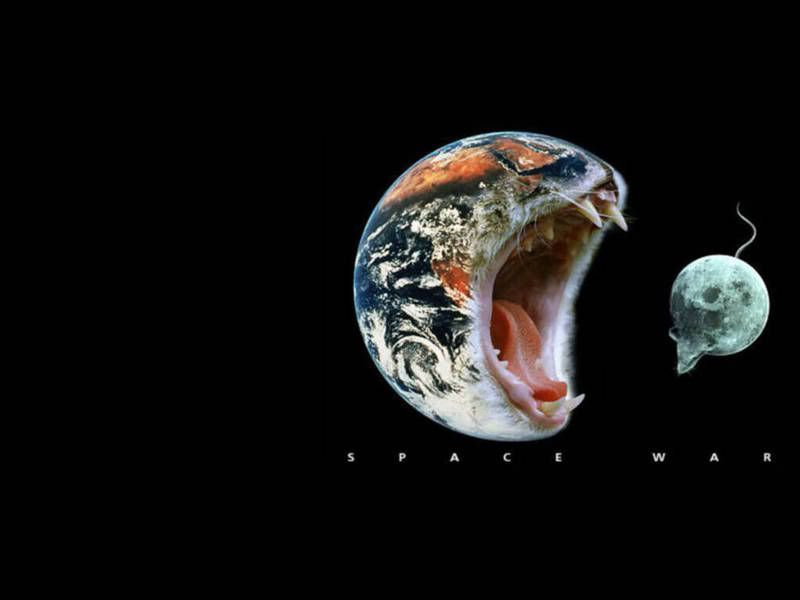
Artist’s concept of the Dawn spacecraft with Vesta and Ceres. (c) NASA/JPL
Posted on 09/19/2009 4:03:05 PM PDT by Fred Nerks
Crater patterns on Vesta and Ceres could help pinpoint when Jupiter began to form during the evolution of the early Solar System. A study modelling the cratering history of the largest two objects in the asteroid belt, which are believed to be among the oldest in the Solar System, indicates that the type and distribution of craters would show marked changes at different stages of Jupiter’s development. Results will be presented by Dr Diego Turrini at the European Planetary Science Congress in Potsdam, Germany, on Monday 14 September.
The study, carried out by scientists at the Italian National Institute for Astrophysics in Rome, explored the hypothesis that one or both objects formed during Jupiter’s formation by modelling their cratering histories during the birth of the giant planet. Their simulation described Jupiter’s formation in three stages: an initial accretion of its core followed by a stage of rapid gas accretion. This is, in turn, followed by a phase where the gas accretion slows down while the giant planet reaches its final mass. During the last two phases Jupiter’s gravitational pull starts to affect more and more distant objects. For each of these phases, the team simulated how Jupiter affected the orbits of asteroids and comets from the inner and outer Solar System, and the likelihood of them being moved onto a collision path with Vesta or Ceres.
‘We found that the stage of Jupiter’s development made a big difference on the speed of impacts and the origin of potential impactors. When Jupiter’s core approaches its critical mass, it causes a sharp increase in low-velocity impacts from small, rocky bodies orbiting nearby to Vesta and Ceres which lead to intense and uniform crater distribution patterns. These low-speed collisions may have helped Vesta and Ceres gather mass. Once Jupiter’s core has formed and the planet starts to rapidly accrete gas, it deflects more distant objects onto a collision course with Ceres and Vesta and the impacts become more energetic. Although rocky objects from the inner Solar System are the dominant impactors at this stage, the higher energies of collisions with icy bodies from the outer Solar System make the biggest mark,’ said Dr Turrini.
The third stage of Jupiter’s formation is complicated by a period known as the Late Heavy Bombardment, which occurred around 3.8-4.1 billion years ago. During this time a significant number of objects, rich in organic compounds, from the outer Solar System were injected on planet-crossing orbits with the giant planets and may have reached the Asteroid Belt. In addition, Jupiter is thought to have migrated in its orbit around this time, which would have caused an addition flux of impactors on Vesta and Ceres.
The team will have an opportunity to confirm their results when NASA’s Dawn space mission reaches Vesta in 2011 and then flies on for a further rendezvous with Ceres in 2015. Dawn will gather information on the structure and the surface morphology of the two asteroids and send back high-resolution images of crater patterns.
‘If we can see evidence of an underlying intense, uniform crater pattern, it will support the theory that one or both of these minor planets formed during the final phases of Jupiter accretion, provided that they aren’t obliterated by the later heavy bombardment. Dawn will also measure concentrations of organic material, which may give us further information about the collisional history with organic-rich objects from the outer Solar System,’ said Dr Turrini.
Source: European Planetology Network
Related definitions & articles from Compendium
Jupiter — Jupiter is the fifth planet from the Sun and the largest and most massive of the giant planets within the Solar System. Its mass amounts to 318 terrestrial masses, and its diameter is 11 times the terrestrial one. Like the other giant planets, Jupiter has a low density which reflects its chemical composition, mostly dominated by hydrogen (90%) and helium (10%)... [more]
Science Centric — Science, health and technology, breaking news
Copyright © 2007— Agency Science.
Science Centric delivers breaking news about the latest scientific discoveries in the fields of physics, chemistry, geology and palaeontology, biology, environment, astronomy, health, and technology. Use of this website assumes acceptance of Terms of use and Privacy policy.
Agency Science network — Science Shots · Lepidopterology | National Museum of Natural History, Sofia · Institute of Zoology

Artist’s concept of the Dawn spacecraft with Vesta and Ceres. (c) NASA/JPL
Wonder if this could be used to determine the age of Hillary.
At last....I’ve been praying for an answer for years.
Ping.
Wonder if the next set of photos might prove the alternative scenario posited by the late Dr. Thomas C. Van Flandern, that the asteroids are the remnants of an exploded planet that once orbited between Mars and Jupiter?
Nah.
See the Meta Research Bulletin if you want to keep an open mind - http://www.metaresearch.org/home.asp
thanks for the very interesting link!
On your wedding night, would you want the festivities televised back to you on CCTV? Or would you rather BE there?

Of course, the perspective is waaaay off in that pic — for one thing, the Earth’s fangs are way bigger. ;’)
 |
||
| · join · view topics · view or post blog · bookmark · post new topic · subscribe · | ||
That looks about right...
Where the heck were you standing when you took that picture?
Uranus.
Fifteen posts and no one said it yet. **snort**
Hey, it had to be done.
Disclaimer: Opinions posted on Free Republic are those of the individual posters and do not necessarily represent the opinion of Free Republic or its management. All materials posted herein are protected by copyright law and the exemption for fair use of copyrighted works.